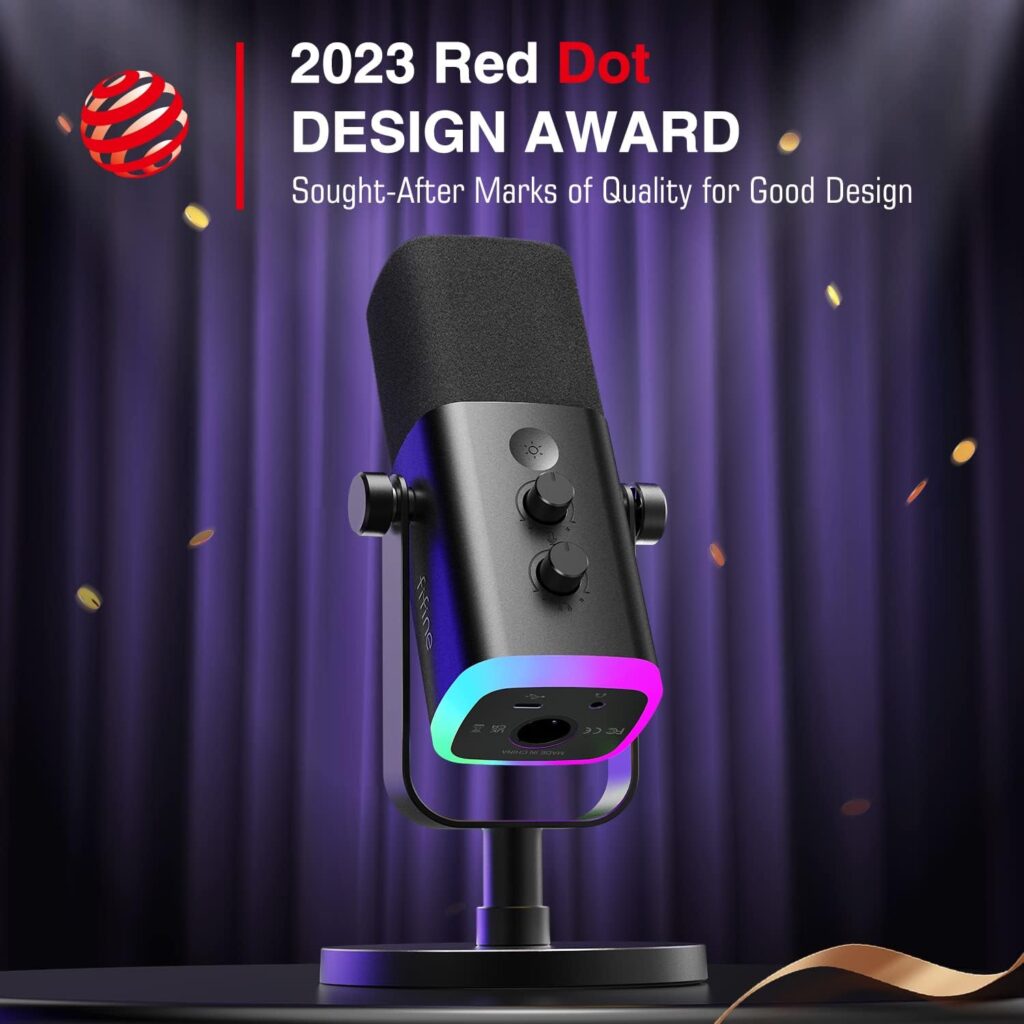Podcast Audio at a Reasonable Price
The Fifine AM8 stands out as an exceptional microphone, offering studio-quality sound at an unbeatable price. Its versatile design, compatible with both XLR and USB connections, caters to a wide range of audio needs, from professional podcasting to gaming. With its sleek design, robust build quality, and user-friendly features like an adjustable pop filter and RGB effects, the AM8 delivers a high-end experience that rivals more expensive models. At just $55, it represents remarkable value for money, making it an excellent choice for anyone seeking a reliable, high-quality microphone without a hefty price tag. The AM8 earns a well-deserved 5-star rating for its outstanding performance and affordability.
-
Price
-
Design
-
Functionality
Every gamer knows the frustration of poor audio quality, like struggling to hear friends over someone breathing into their mic or the clatter of a keyboard. This is often due to the use of combination headphones/microphones, which typically offer only mid-tier performance in both aspects.
Personally, I prefer an XLR setup at home, involving an audio interface that connects my computer to studio-quality microphones. XLR microphones, especially condenser types, offer superior voice pickup compared to traditional USB microphones.
I’ve used an XLR setup for years, both for work and leisure. The enhanced voice clarity makes a noticeable difference in applications like Discord and Teams, giving that professional, podcast-like sound.
While XLR setups are more common in professional studios, they also hold great potential for personal use and can be quite affordable.
Unlike traditional USB microphones, XLR mics offer professional-grade sound capture, making them ideal for gamers who stream or record their gameplay. This enhanced audio quality ensures clear and crisp communication, which is essential for team-based games or creating engaging content.
One popular brand in the market is Fifine. I recently reviewed their A8 USB microphone and was impressed, sparking my interest in their product line.
Today, I’m examining their XLR/USB Dynamic AM8 microphone and how it can elevate your gaming experience from mid-tier to top-tier.
Welcome to my overview of the Fifine AM8 XLR/USB Dynamic microphone.
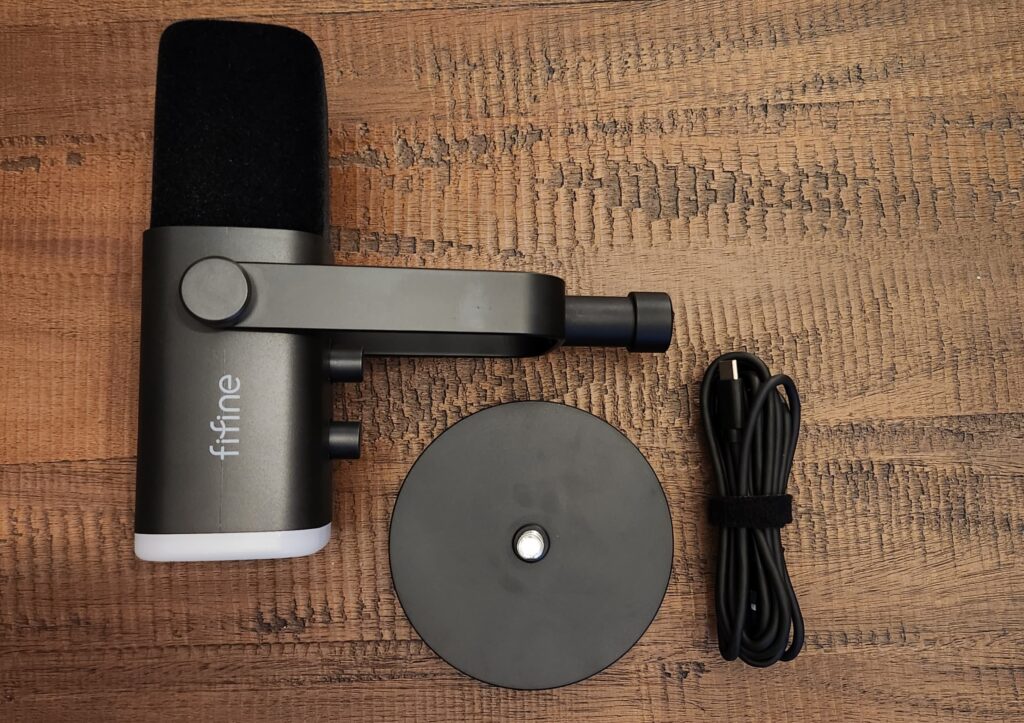
Design
Right off the bat, I was impressed with the design, look, and feel of the AM8. Its robust stand, metal frame, and extremely soft pop filter are remarkable, especially considering the low price point.
The AM8 can be mounted in two ways: using a heavy base plate with a non-slip rubber foot, or by attaching the metal bracket (3/8” or 5/8” screw) onto a microphone arm. Be mindful of the added weight when using a microphone arm. I preferred the base plate for easy positioning.
For my testing, I used the included base plate, as it made positioning the mic closer to my face and directly in front more convenient.
The microphone is available in matte black, pink, or white, with color-matched pop filters (black for the black model, gray for the others). The option to choose colors is a thoughtful touch for matching desk aesthetics.
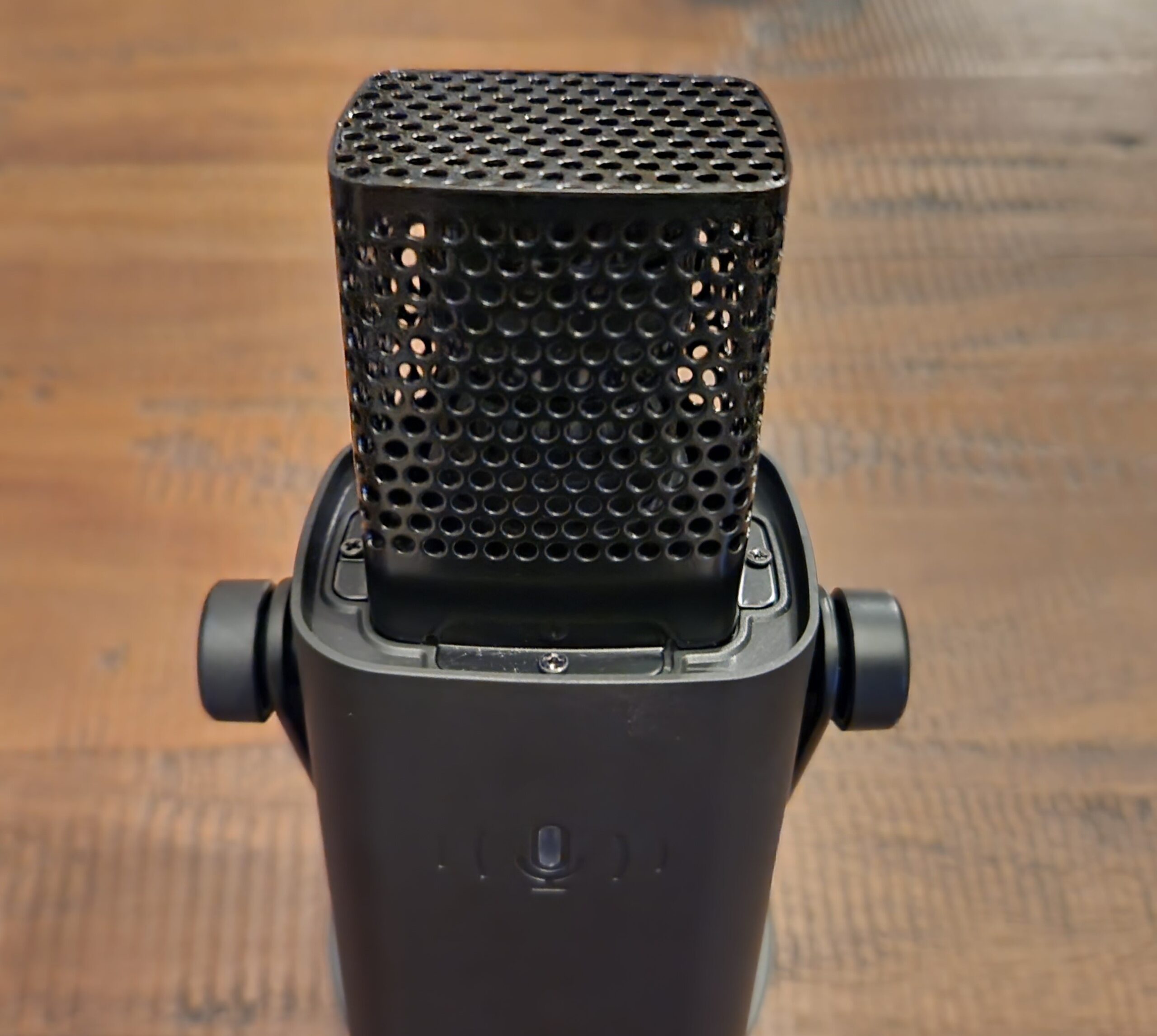
On one side of the microphone are two linear knobs controlling the audio pickup output volume and the volume of the optional 3.5MM headphone input.
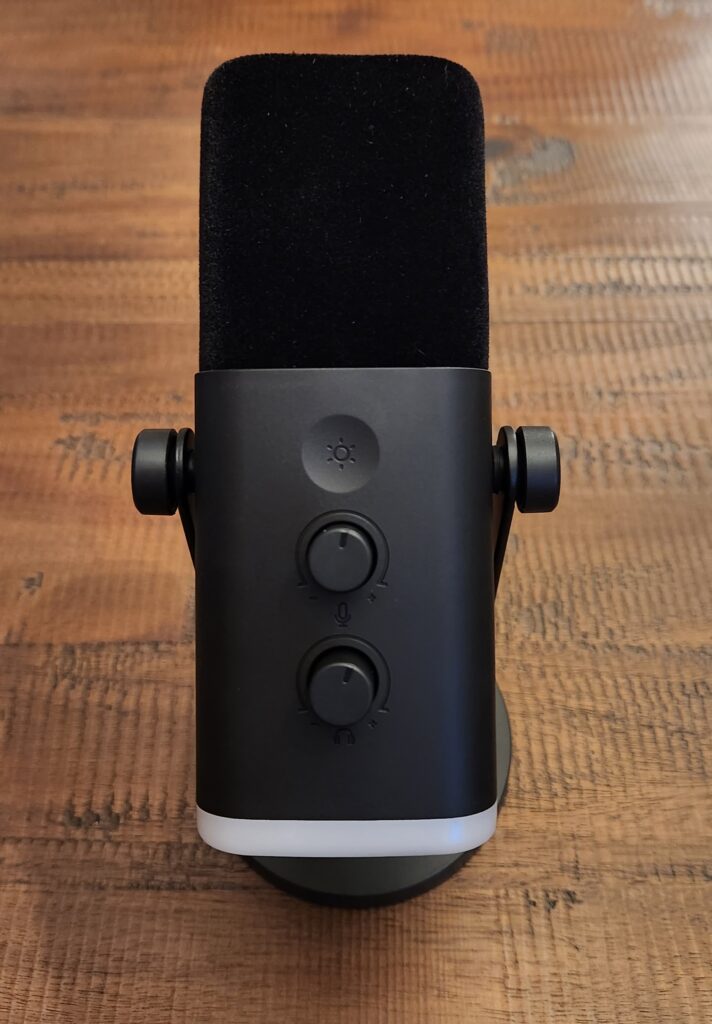
Using the 3.5MM headphone jack allows you to hear your own voice through the headphones, akin to a radio or podcast experience.
Above these knobs is a capacitive button to change the RGB effects of the microphone. On the bottom of the plastic housing is a diffused RGB ring light, offering breathing, static, or gradient color schemes. Holding the capacitive button also turns off the RGB effects. I found the multi-color gradient to look subtle and not at all distracting.
On the opposite side of the knobs is a single capacitive touch button for muting the microphone. This feature is convenient for quick muting, and the LED indicator is helpful to determine if you’re live or muted.
At the bottom of the microphone, you’ll find the XLR input, USB-C power, and the 3.5MM headphone jack. A 6.5FT USB-C power cable is included. However, the placement of these ports can limit the mic’s rotation when cables are plugged in, which is less of an issue with a microphone arm.
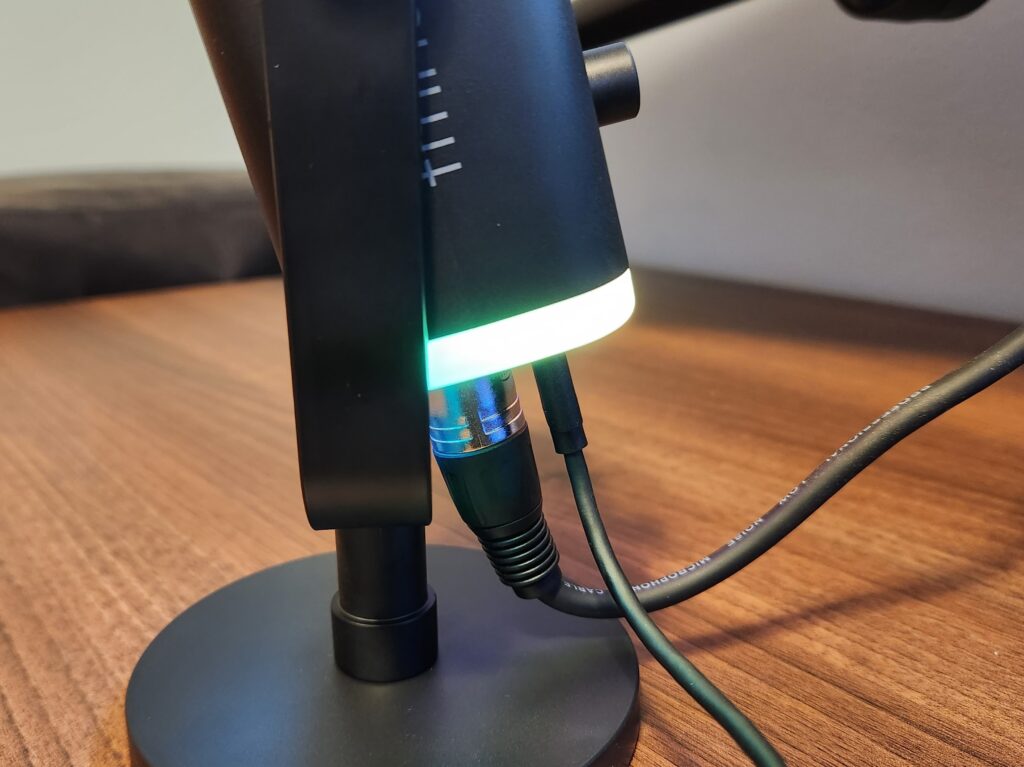
The dynamic AM8 is designed to be spoken into from the top, ideally positioned 2 – 6 inches away from your mouth and angled at about 45 degrees.
Below the incredibly soft pop filter, inside a metal housing, sits the dynamic microphone.
I’m thoroughly impressed with the build quality of the AM8. It feels solid, looks professional, and offers everything an average gamer, podcaster, or worker could need in a versatile microphone.
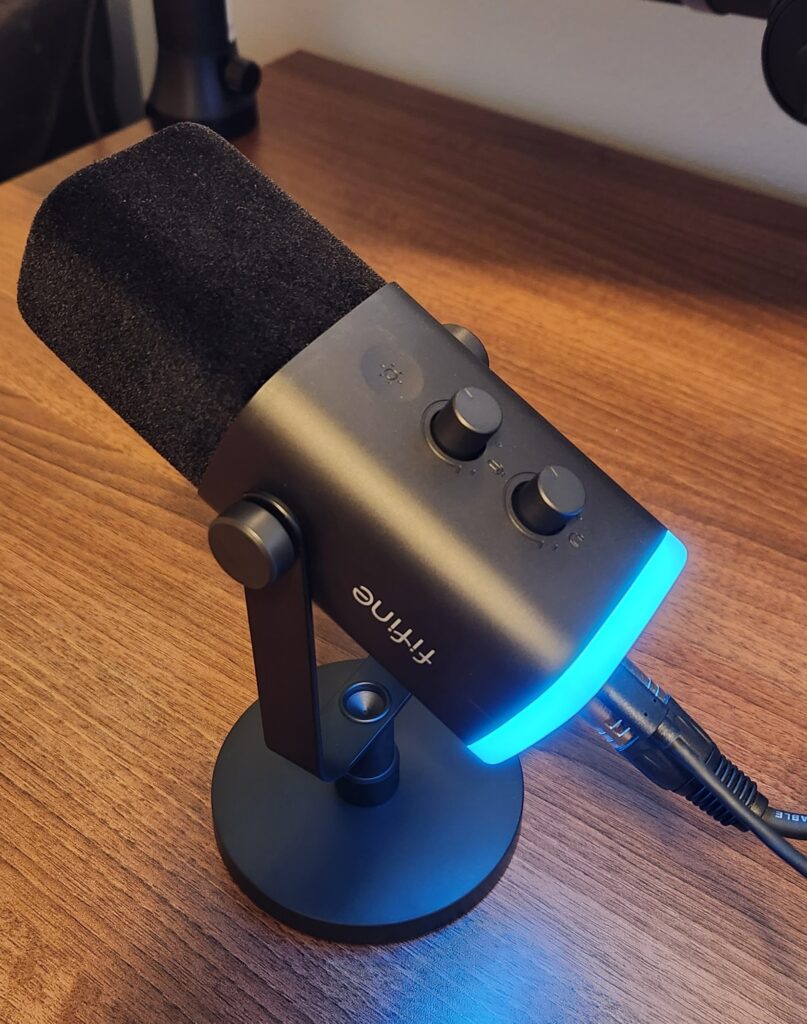
Functionality
I’ve used various XLR microphones in the past, including the Audio-Technica AT2035 with a cardioid condenser, connected to a Behringer U-Phoria UM2 audio interface. I used the same setup to test the AM8.
For context, the AT2035 I’m using for comparison is more than double the price of the AM8.
Setting up the AM8 is straightforward, essentially plug-and-play. Being a dynamic microphone, it’s less sensitive to background noise like keyboards and breathing, focusing more on your voice.
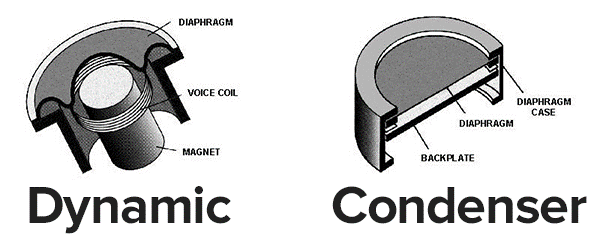
I had set the UM2 audio interface output volume to about half, the AM8 output volume to full, and then adjust the Windows microphone output volume to 100%. This setup provided the best balance of voice quality and sound output in apps like Discord, WebEx, and Teams.
With most apps supporting some sort of noise filtering, or using Nvidia Broadcast, you can’t hear snapping of fingers, keyboard clacking, or any excessive noise. This is the shining moment of a Dynamic microphone.
I used the AM8 for various recordings, including work meetings, gaming sessions, and general videos. It required no configuration once set up on the desk.
Surprisingly, no one noticed when I switched microphones. While this might seem negative at first, it’s actually a significant point in this overview. When someone you frequently talk to over voice changes microphones, the difference is usually noticeable. The fact that switching from the AT2032 to the AM8 went undetected suggests that the AM8, costing less than half the price, performs comparably or even better.
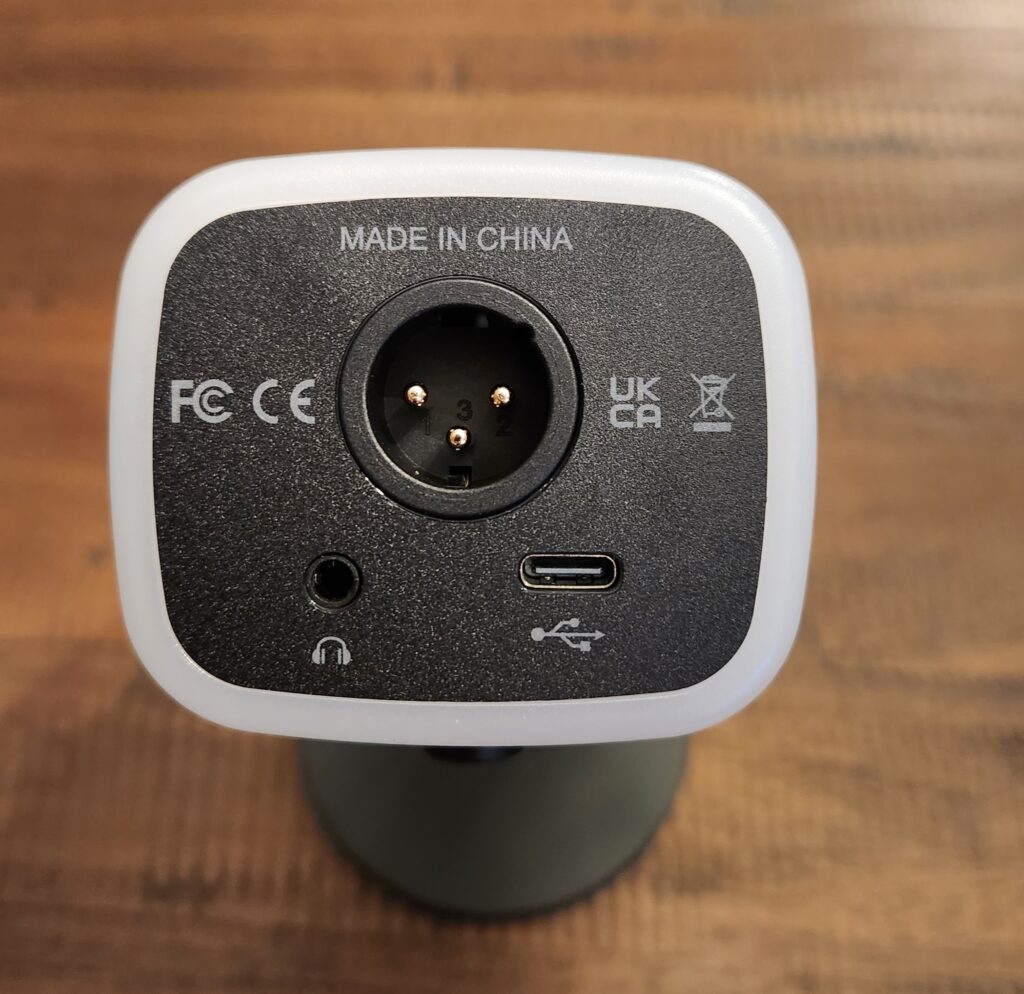
The AM8’s dynamic pickup is clear, rich, and precise, although it does need to be close (within 2 – 6 inches) to avoid sounding quiet to listeners.
I felt comfortable using it for the multiple work meetings, gaming sessions, and would go as far as to use it for music recording even.
With the AM8, you can tackle virtually any audio recording task. Whether you want to stream on Twitch, host a podcast on YouTube, or play games with clear communication, it manages all these tasks with crystal-clear audio.
The microphone can also be used solely with the USB-C cable, making it convenient for on-the-go use with a laptop.
In terms of functionality, the Fifine AM8 is a solid, versatile microphone, ready to use right out of the box and adaptable to XLR configurations. Fifine even offers an XLR audio interface in their product lineup.
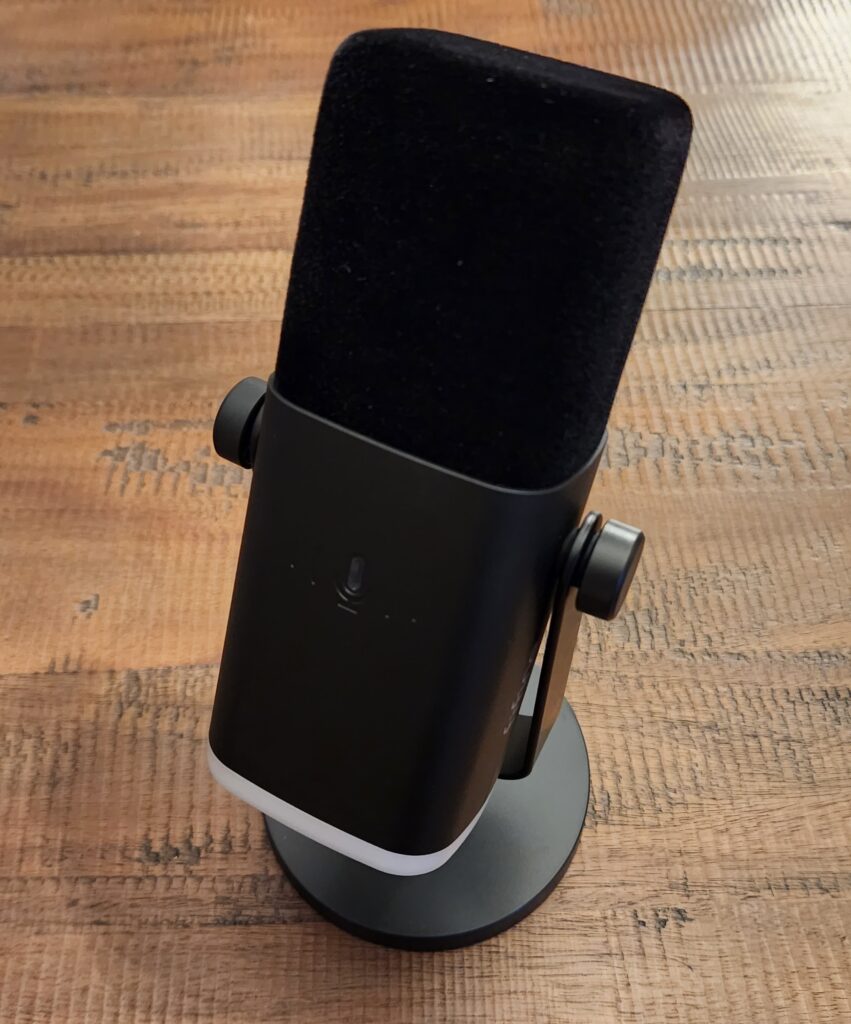
My Final Thoughts
After extensive testing and comparison, the Fifine AM8 has left a lasting impression. Its award-winning design, evident in both aesthetics and functionality, seamlessly integrates into any desk setup. The microphone excels in versatility, effortlessly switching between XLR and USB connections while maintaining outstanding audio quality. This flexibility is particularly beneficial for users who require a microphone for various applications, from professional work to gaming and content creation.
What stands out most about the AM8 is its value for money. Priced at just $55, it competes with, and in some cases outperforms, microphones that cost twice as much. This affordability, coupled with its high-quality performance, makes the AM8 an exceptional choice for both novice and experienced users. It’s no surprise that it has become a favorite on platforms like Amazon, reflecting its growing popularity and user satisfaction.
In conclusion, the Fifine AM8 isn’t just a microphone; it’s a game-changer in its category. Offering professional-grade audio quality at an accessible price point, it’s a top choice for anyone looking to upgrade their audio setup without breaking the bank. The AM8 earns a solid 5-star rating from me, and I confidently recommend it to anyone in search of a reliable, high-quality microphone for diverse applications.
© 2023 Justin Vendette

